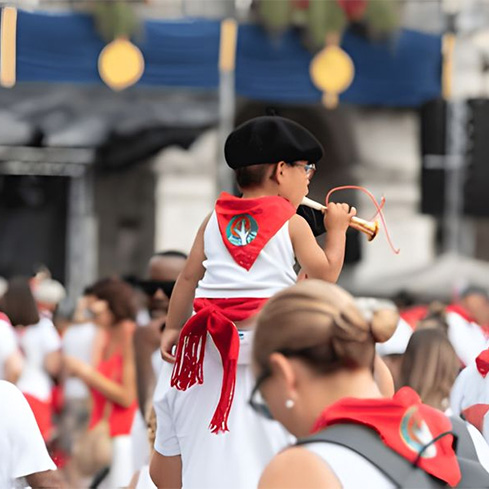7 km from Saint-Jean-de-Luz, at the foot of La Rhune, Ascain is a typical Basque inland village. Nestling on the banks of the River

The pediment square
In Ascain, as elsewhere in the Basque Country, the Place du Fronton is the beating heart of the village, a place to meet up, chat, enjoy a drink on the terrace, play a game of pelota, take in the designer market and enjoy summer entertainment, particularly during the Ascain fêtes in August.
Today vibrant and welcoming, this traditional little square was nevertheless the scene of some very violent historical scenes in the early 17th century. At the time, the
The Roman bridge at Ascain
The bridge over the River Nivelle, known as the “Roman Bridge”, dates back to the 15th century. Roman in name only. Until the 19th century, it was the only passageway into the village. The pleasant setting is ideal for relaxing, picnicking and fishing. The forty-meter-long structure, with its three unequal arches, is a listed historic monument. It occupied an important strategic position during the retreat of Napoleon’s armies in 1813, and one of the arches was destroyed to prevent the passage of the Duke of Wellington‘s artillery. For Napoleonic history buffs, the Bizkarzun redoubt and the Esnaur redoubt, which controls access to the Saint-Ignace pass, are part of the La Rhune massif fortifications designed by Marshal Soult along the crest of the Pyrenees.
The “Maison du Fou”
Near the Roman bridge, you can see the house of Ferdinand Pinney Earle, a famous Hollywood film decorator of the 1920s. Settling in
Ascain church
Magnificent, like many churches in the Basque Country! The original church, dedicated to Notre-Dame de l’Assomption, was built in the 14th century, rebuilt in the 17th and inaugurated in 1626 under Louis XIII.Ascain ‘s massive bell tower is reminiscent of the square keeps of the Middle Ages. Inside, the church boasts three tiers of carved wooden galleries dating from the 16th century. A superb Baroque altarpiece is surrounded by statues of the Virgin Mary, St. Joseph and St. John, topped by a dove. As for the astonishing model ship hanging in the nave, it’s an ex-voto reminder of the village’s port and maritime past, renowned for its shipyards. The floor is covered with large
La Rhune, a mythical peak to discover from Ascain
Nestled at the foot of the Basque mountains, Ascain is the starting point for hikers on the Rhune, one of the most emblematic walks in the Basque Country. The hike starts from the Carrières parking lot in Ascain, near the motocross course. The trail is fairly wide, with a vertical drop of around 760 m. Distance: 10 km. Allow around 2h30 for the ascent and 2h for the descent.
photo©F.Perrot


